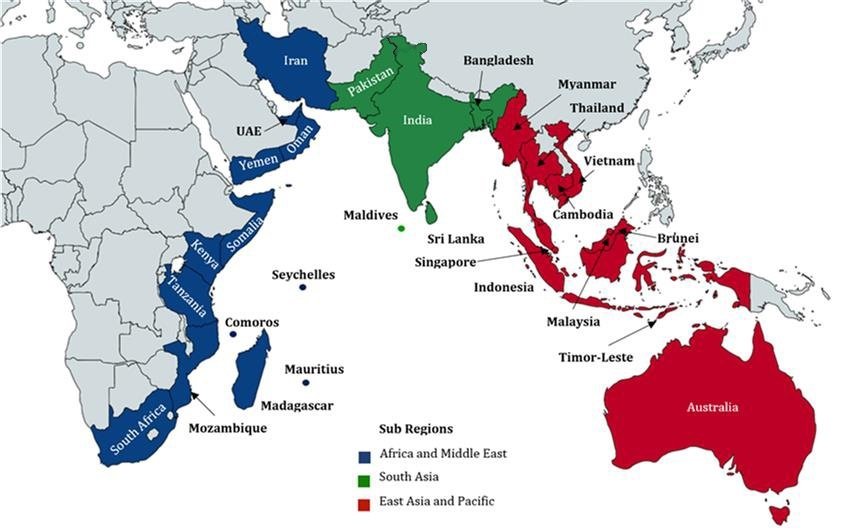Geopolitics of the Indian Ocean, The Indian Ocean region is a critical area for global trade, security, and geopolitics. The region’s size and diversity explain its geo-economic importance, connecting the Middle East to Southeast and East Asia, as well as Europe and the Americas.
geopolitics of the Indian Ocean

The Indian Ocean region is critical for global trade, security, and geopolitics. The region’s size and diversity explain its geoeconomic importance, connecting the Middle East to Southeast and East Asia, as well as Europe and the Americas.
The Indian Ocean is a vital trading hub, connecting resource-rich Africa and the energy-dense Middle East to South Asia’s labor markets.
The region faces a number of security risks, including piracy, terrorism, territorial disputes, and geopolitical tensions.
The Indian Ocean hosts some of the fastest-growing economies in the world and connects these economies with both the Atlantic Ocean and the Pacific, making the Indo-Pacific a region of tremendous geostrategic importance.
The region’s strategic significance has led to countries vying for control over the Indian Ocean, with India, China, and the United States expressing significant concern regarding each other’s increased presence in the region.
Major players in the Indian Ocean region
The Indian Ocean region is a critical area for global trade, security, and geopolitics, and it has several major players. According to various sources, the traditional players in the region include Australia, France, India, Japan, the United Kingdom, and the United States.
These countries continue to expand their presence in the Indian Ocean, while shifting geopolitical conditions have led to the emergence of new players such as China, the UAE, Russia, Saudi Arabia, and Türkiye.
India is considered the dominant player in the eastern Indian Ocean, while France is a major player in the western Indian Ocean.
The United States, China, and India are also considered significant players in the region.
he Indian Ocean Rim Association, which includes countries such as Australia, Indonesia, Iran, and South Africa, is a regional forum that plays a crucial role in shaping the power dynamics in the region.

geography of Indian Ocean region
The Indian Ocean is the third-largest ocean in the world, covering approximately 20% of the water on the Earth’s surface. It is bordered by landmasses and an archipelago on three sides, making it more like an embayed ocean centered on the Indian Peninsula. The ocean is surrounded by Africa, Asia, Australia, and Antarctica. It has an average depth of 3,741 meters and provides major sea routes connecting the Middle East, Africa, and East Asia with Europe and the Americas. The region is home to thirty-three nations and 2.9 billion people, and it is a critical trade arena, accounting for over one-third of the world’s bulk cargo traffic and two-thirds of the world’s oil. The Indian Ocean has a unique geography, with fewer islands and narrower continental shelves compared to the other major oceans.


Pingback: Oceanic density and salinity - Geography Study